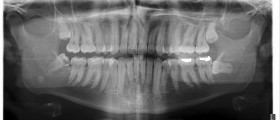
Adnexal cyst is a condition where tumors form in the adnexa region. The adnexa refer to the area adjoining the uterus, which includes the ovaries, fallopian tubes, blood vessels, ligaments, and connective tissue. Pathological changes in the adnexa may originate in the uterus, bowel or retroperitoneum. In some cases, it can be also due to metastasized cancer from other organs in the body like the breast or stomach. Development of tumor in the adnexa region is known as adnexa cyst.
Causes of Adnexal CystNormally, as a common part of menstrual cycle, the ovaries produce 6 to 7 follicular cysts each year. Those are benign cysts that do not need to be treated since they disappear on their own. On the other hand, when such cysts remain present for too long or reach abnormal size they need to be treated. Adnexal cyst in pre menopausal women can be caused by ectopic pregnancy, polycystic ovaries, endometrioma or tubo-ovarian abscess. In postmenopausal women, adnexal cyst can be due to fibroids, fibromas, cancer or diverticular abscess. In pre menopausal women, the neoplasm that develops as a part of adnexal cysts is commonly non cancerous. Malignant or cancerous adnexal cysts are serious medical problem that requires prompt management.
Symptoms of Adnexal CystMost commonly, adnexal cyst does not cause any symptom. Adnexal cyst is usually discovered accidentally during regular gynecological exam. Sometimes and depending on the cause, adnexal cyst can be associated with pelvic pain. Also pre menopausal women may experience irregular menstrual periods. In rare instances, there may occur bleeding at adnexal cyst site. The large cysts can cause pressure on the bladder and rectum leading to constipation and urinary problem. Adnexal cyst can be responsible for increase in frequency of urination. Malignant adnexal cysts often cause gastrointestinal disorders.
Diagnosis of Adnexal CystIn order to diagnose adnexal cyst, a doctor must first inquire about patient’s medical history. Pelvic exam can help the doctor to find adnexal cyst. Type of adnexal cyst also has to be determined so the doctor can choose adequate treatment. Speculum is an instrument used to make the vagina wider. With the help of speculum, the doctor can have a better view of the vagina and the cervix. Ultrasonography or pelvic ultrasound is required if the doctor suspects a neoplasm, since this imaging test can present the size, location and appearance of adnexal cyst.
Treatment of Adnexal CystIn pre menopausal women, small adnexal cysts commonly resolve on their own and do not require treatment. To speed up the process a doctor may prescribe birth control pills. On the other hand, adnexal cysts in postmenopausal women have to be monitored for some time and if needed surgically removed. Surgical treatment is only option if adnexal cysts are found in young girls.






_f_280x120.jpg)










Your thoughts on this
Loading...